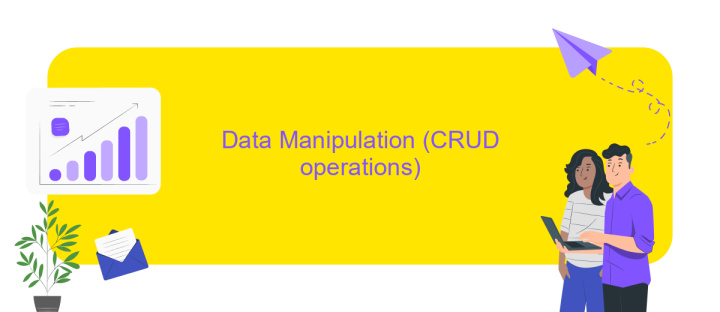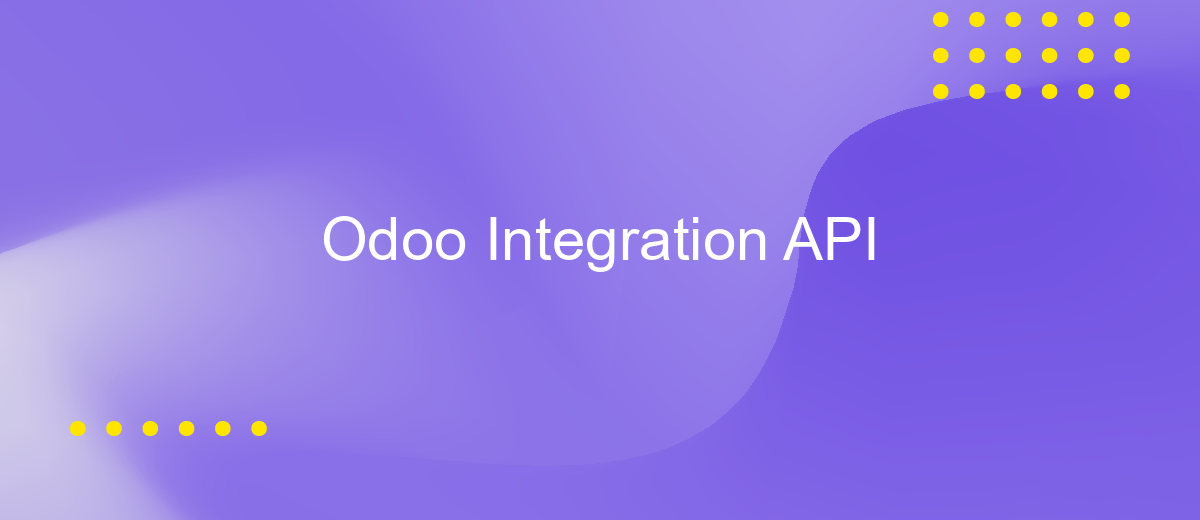Odoo Integration API
The Odoo Integration API offers a powerful and flexible solution for businesses seeking to streamline their operations through seamless connectivity. By leveraging this API, enterprises can effortlessly integrate Odoo's comprehensive suite of business applications with existing systems, enhancing productivity and efficiency. This article explores the key features, benefits, and practical applications of the Odoo Integration API, providing insights into how it can transform business processes and drive growth in a competitive landscape.
Introduction to Odoo Integration API
Odoo Integration API is a powerful tool designed to enhance the connectivity and functionality of Odoo with other software systems. This API facilitates seamless interaction between Odoo and external applications, enabling businesses to automate workflows, synchronize data, and optimize operations. Whether you are looking to integrate a CRM, e-commerce platform, or any other third-party application, Odoo Integration API provides the necessary resources and flexibility to achieve these goals efficiently.
- Comprehensive documentation for easy implementation.
- Support for RESTful API architecture, ensuring scalability.
- Robust authentication mechanisms for secure data exchange.
- Flexible data models to accommodate various business needs.
- Real-time data synchronization to maintain up-to-date records.
By leveraging the Odoo Integration API, businesses can significantly enhance their system capabilities, leading to increased productivity and improved customer experiences. The API's user-friendly design and extensive support make it accessible for developers of all skill levels, ensuring that companies can tailor integrations to meet their specific needs. Ultimately, the Odoo Integration API empowers organizations to streamline processes and foster innovation, driving growth and success in today's competitive market.
Authentication and Authorization

To interact with the Odoo Integration API, secure authentication and authorization are essential. Odoo uses token-based authentication to ensure that only authorized users can access the API. First, you need to generate an API key from your Odoo account settings. This key acts as a token that must be included in the header of every API request. By using this method, Odoo can verify the identity of the user making the request, ensuring data security and integrity.
For streamlined integration and management of API access, consider using tools like ApiX-Drive. This service simplifies the process of connecting Odoo with other applications by automating token management and request handling. With ApiX-Drive, you can easily configure authentication settings, ensuring that your integrations remain secure without the need for constant manual intervention. By leveraging such services, businesses can enhance their API interactions, maintain robust security protocols, and reduce the complexity of managing multiple API connections.
Data Manipulation (CRUD operations)

Odoo Integration API offers robust capabilities for data manipulation, essential for maintaining dynamic business processes. CRUD operations—Create, Read, Update, and Delete—form the backbone of these capabilities, allowing seamless interaction with Odoo's database. By leveraging these operations, businesses can efficiently manage their data, ensuring accuracy and relevance in real-time applications.
- Create: Insert new records into the database, establishing foundational data for business operations.
- Read: Retrieve existing data, enabling users to access and review necessary information effortlessly.
- Update: Modify existing records to reflect current information, ensuring data integrity and consistency.
- Delete: Remove outdated or unnecessary records, optimizing database performance and relevance.
Effective use of CRUD operations within the Odoo Integration API enhances data management, providing businesses with the flexibility to adapt to changing needs. By integrating these operations into their workflows, organizations can optimize their processes, reduce errors, and maintain a competitive edge in their industry. The API's intuitive design ensures that even complex data manipulations are executed smoothly, supporting business growth and innovation.
Working with Odoo Models and Fields

Odoo's powerful framework allows seamless interaction with its models and fields, making it a preferred choice for business applications. Models in Odoo represent database tables, while fields are the columns within these tables. This structure provides a robust way to manage and manipulate data, ensuring consistency and integrity across the platform.
To interact with Odoo models, developers can use Odoo's ORM (Object-Relational Mapping) system. This system simplifies database operations, enabling the creation, reading, updating, and deletion (CRUD) of records with minimal effort. Understanding the core components of Odoo models and fields is crucial for efficient API integration and customization.
- Models: Define the structure and behavior of data within Odoo.
- Fields: Specify the type and nature of data stored in a model, such as char, integer, or date.
- Methods: Functions defined on models to perform operations on the data.
- Relations: Establish connections between different models, such as many-to-one or many-to-many relationships.
By leveraging these components, developers can tailor Odoo to meet specific business needs, ensuring a flexible and scalable solution. Mastery of Odoo models and fields is essential for harnessing the full potential of the Odoo Integration API.
Advanced API Features and Best Practices
Odoo Integration API offers advanced features that enable seamless connectivity and data exchange between Odoo and other applications. One such feature is the support for webhooks, which allows real-time data synchronization by sending HTTP callbacks when specific events occur in Odoo. This reduces the need for constant polling and improves efficiency. Additionally, the API provides robust authentication and authorization mechanisms, ensuring secure access to Odoo data. Developers can also leverage batch processing capabilities, which allow multiple operations to be executed in a single request, optimizing performance and reducing server load.
To maximize the effectiveness of Odoo API integrations, following best practices is crucial. Start by thoroughly understanding the API documentation and structure your API calls efficiently to minimize latency. Implement error handling and logging to quickly identify and resolve issues. When dealing with complex integrations, consider using services like ApiX-Drive, which simplifies the process by offering a user-friendly interface for setting up and managing integrations without extensive coding. Regularly update your integration to align with the latest Odoo API changes and maintain optimal performance and security.
FAQ
What is Odoo Integration API?
How can I integrate Odoo with other applications?
What are the benefits of using Odoo Integration API?
Is it difficult to set up Odoo integrations?
What are some common use cases for Odoo integrations?
Apix-Drive is a universal tool that will quickly streamline any workflow, freeing you from routine and possible financial losses. Try ApiX-Drive in action and see how useful it is for you personally. In the meantime, when you are setting up connections between systems, think about where you are investing your free time, because now you will have much more of it.

